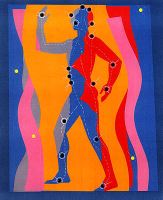 Â Patients with exercise-induced delayed-onset muscle soreness felt better after acupuncture, according to researchers at Goethe-University in Frankfurt, Germany.
 Patients with exercise-induced delayed-onset muscle soreness felt better after acupuncture, according to researchers at Goethe-University in Frankfurt, Germany.
Delayed-onset muscle soreness is a common muscular condition characterized by pain, tenderness, and loss of range of movement. It occurs 24 to 48 hours after participating in unaccustomed exercise or strenuous activity.
First, the details.
- 22 healthy adults were randomly assigned to 3 treatment groups.
- Real acupuncture: deep needling at classic acupuncture points and tender points
- Sham-acupuncture: superficial needling at nonacupuncture points
- Control: no needling
- Soreness of the elbow was induced through eccentric contractions until exhaustion.
- An eccentric contraction occurs when a muscle is contracting, while an external force is trying to lengthen the muscle.
- Changes in pain perception were measured using a visual analogue scale (VAS), mechanical pain threshold (MPT), and maximum isometric voluntary force (MIVF; a measure of muscle function).
And, the results.
- There were no significant differences between groups at the start of the study.
- After 72 hours, pain perception (VAS) was significantly lower with acupuncture vs sham acupuncture and no treatment.
- However, the other scores were not significantly different between groups.
The bottom line?
The authors concluded, “Although acupuncture seemed to have no effects on mechanical pain threshold and muscle function, it proved to reduce perceived pain arising from exercise-induced muscle soreness.
Earlier this year, researchers in Japan conducted a similar study and also reported improvement as measured by changes in the VAS.
12/30/08 21:46 JR